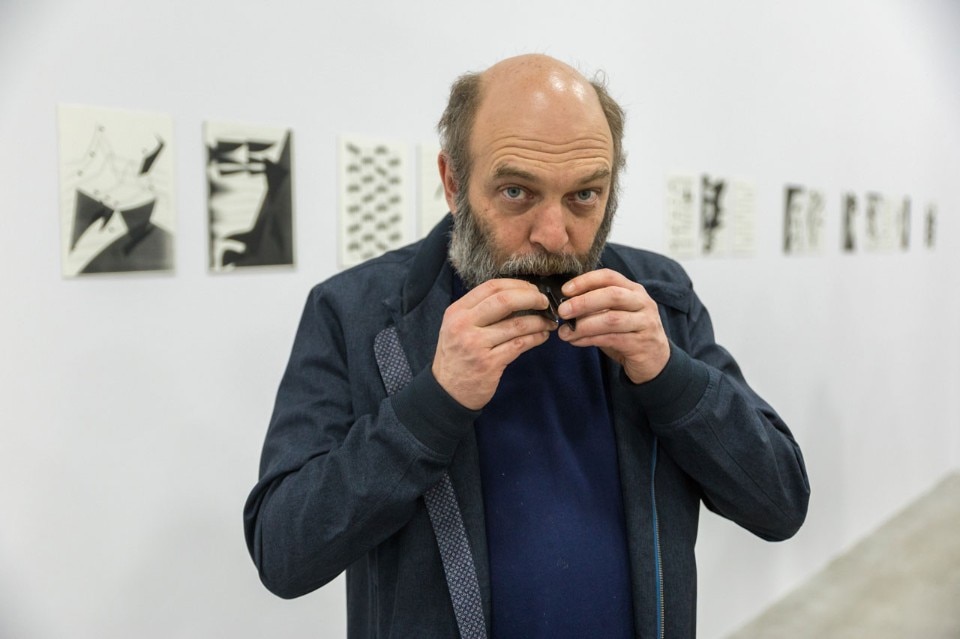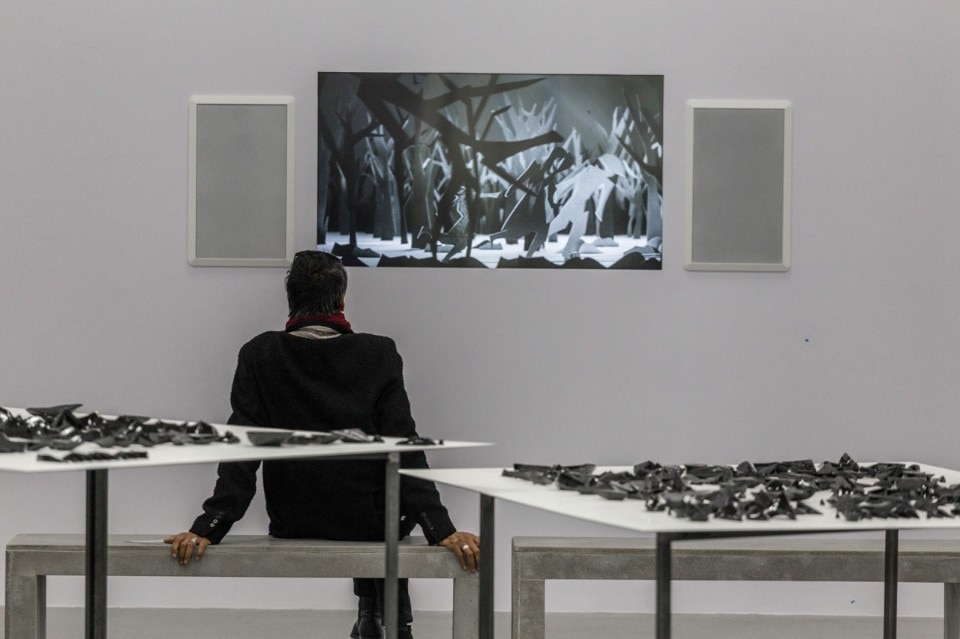
The composite work presented in the “Life in the folds” pavilion combines print, sculpture and cinema to give shape to an installation of great formal rigour, which is brought to life thanks to music. The exhibition develops around a series of transpositions, starting from abstract forms that the artist has organised into an encrypted but functional alphabet, which is adopted to compose the phrases of brief poetic texts. These new type characters then undergo a further transition by transforming into phonetic symbols, which are used to develop texts presented as musical scores. Each character – type symbols and punctuation included – then assumes the form of a musical instrument: a ceramic ocarina, which, when played, emits a particular sound for each letter.
In the pavilion, nearly 1,000 ocarinas confront the 92 pages of musical-phonic score drawn with the new language invented by the artist, and photocopied before being hung on the walls.
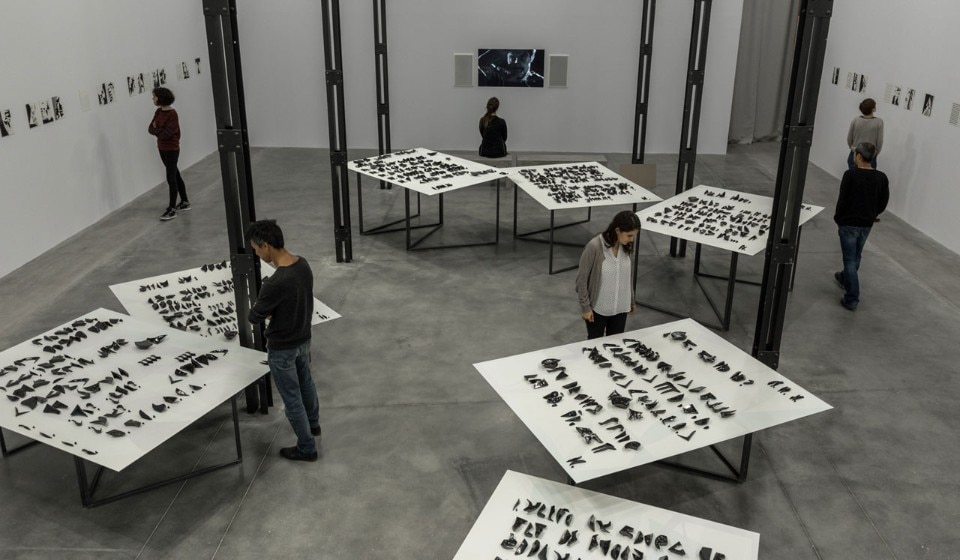
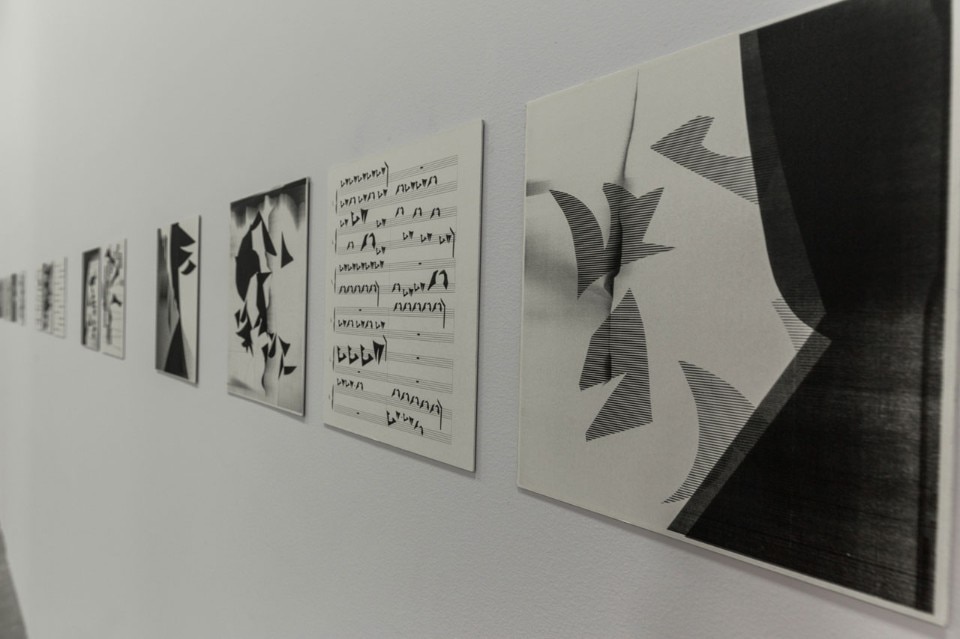
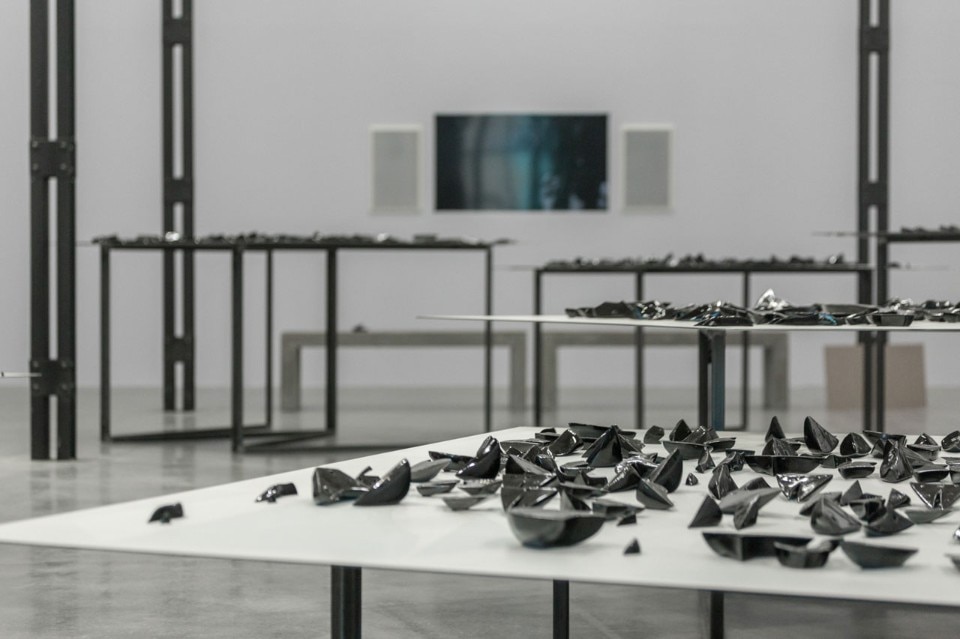
The images of violence are not shown. At the moment of the lynching, the figure of the puppet master and the music prevail over the rest. During the projection in the pavilion, a live ensemble performs the soundtrack and interprets the events of the story by playing the ocarinas.
The musicians belong to the Ensemble Liminare, an independent group dedicated to contemporary and experimental music based in Mexico City. Meanwhile, two actors hand out the newspaper created by the artist and written with the encrypted alphabet, which features a critical essay on a number of Mexican political issues.
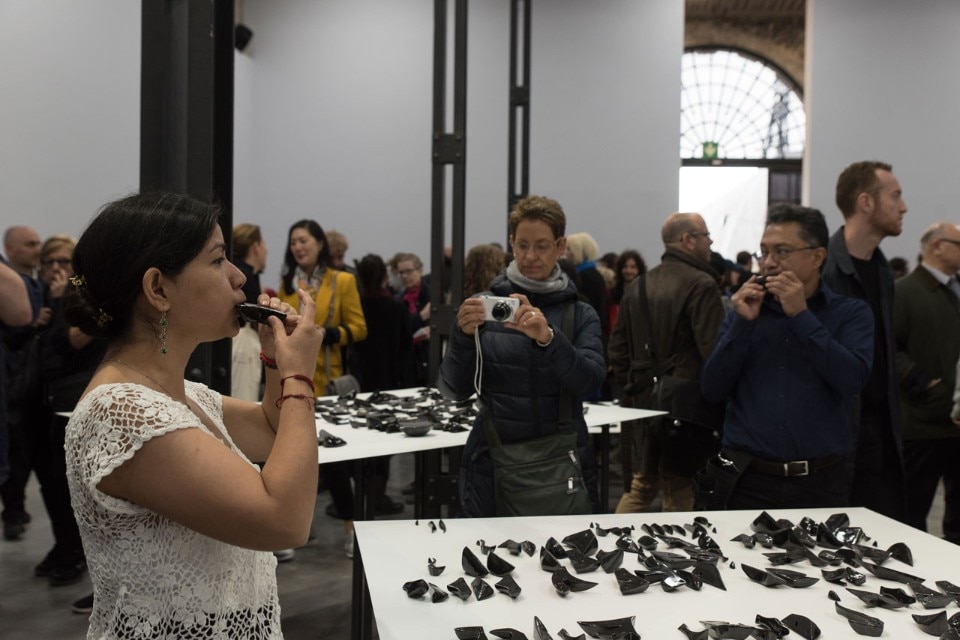
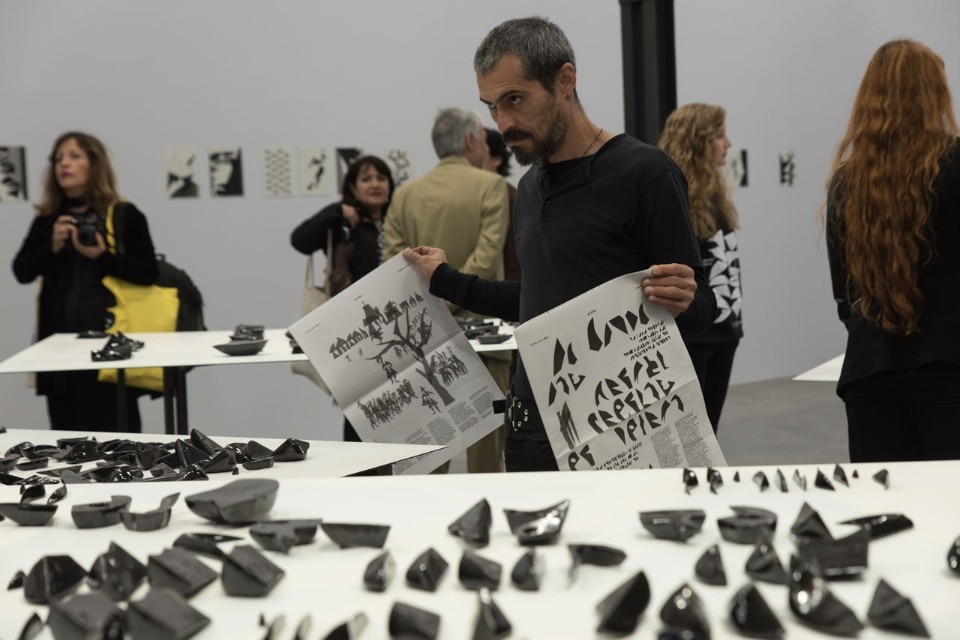
until 26 November 2017
Carlos Amorales – Life in the Folds
Padiglione del Messico
57. Esposizione Internazionale d’Arte
Arsenale, Sala d’Armi, Tesa B
Curator: Pablo León de la Barra
Commissioner: Gabriela Gil Verenzuela


